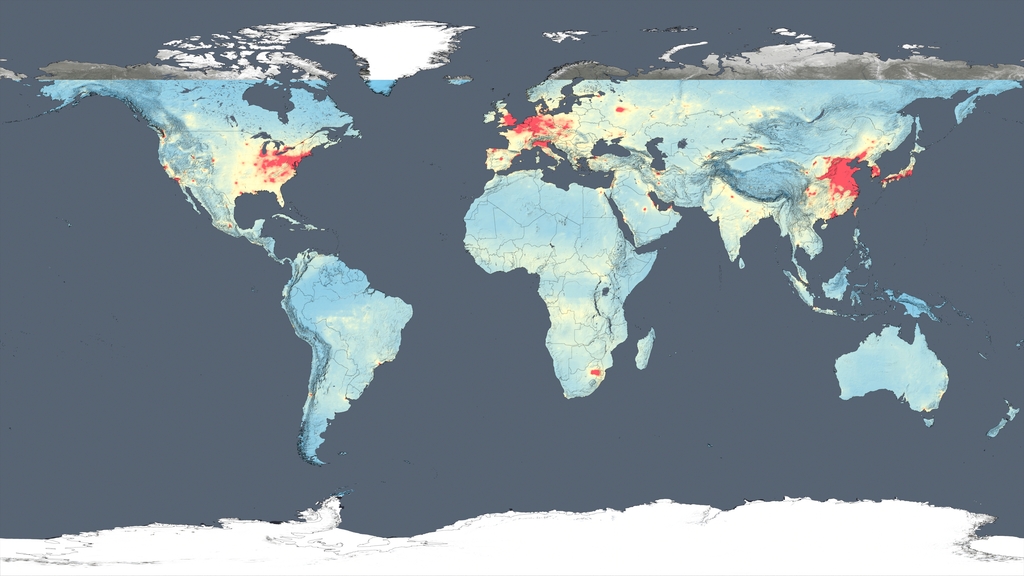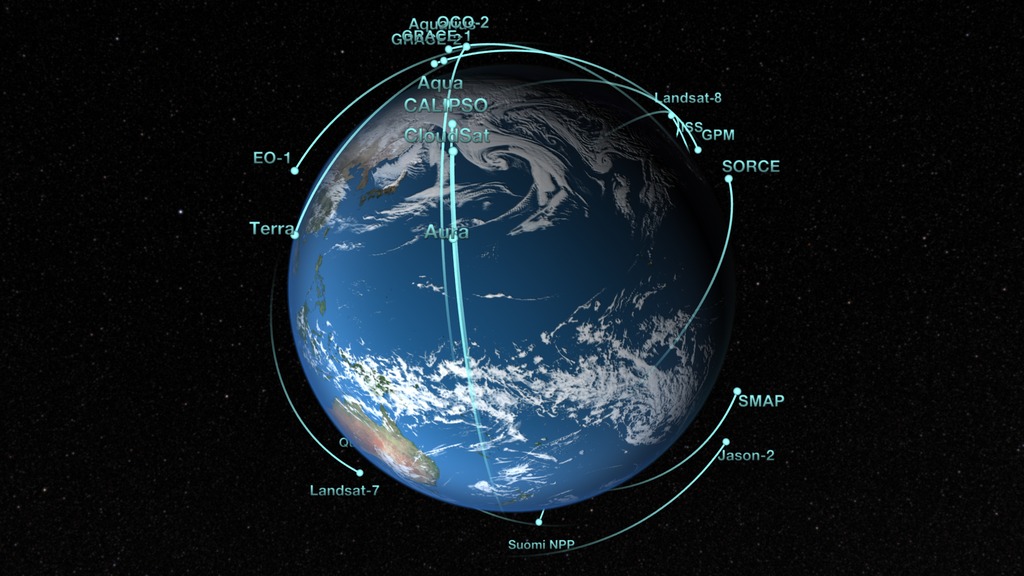A Tale of Three Cities: Beijing, Los Angeles, Atlanta
Dr. Bryan N. Duncan is a deputy project scientist for the Aura Mission at NASA Goddard. In this talk he tells the story of air quality in three cities- Beijing, Los Angeles, and Atlanta.
For complete transcript, click here.
In this talk, Dr. Bryan Duncan, tells a tale of air quality in three cities—Beijing, Los Angeles, and Atlanta. Instruments on NASA satellites monitor pollution around the world. One of these, The Ozone Monitoring Instrument (OMI), on the AURA satellite, has observed large amounts of sulfur dioxide over Beijing, which is released when coal is burned. Similarly, in the 1950s, LA experienced high levels of another air pollutant—ozone—which was sometimes recorded at above 500 ppbv. (The current National Ambient Air Quality Standard is 75 ppbv). With the advent of catalytic converters and other environmental policy efforts that number went way down. But what worked to reduce ozone in Los Angeles didn’t work to reduce high ozone levels in another city—Atlanta. In this talk, Dr. Bryan Duncan, talks about the dynamic nature of air quality, what causes ozone, sulfur dioxide, and nitrogen dioxide, and why reducing volatile organic carbon pollution worked to reduce ozone in Los Angeles, but not in Atlanta.
Credits
Please give credit for this item to:
NASA's Goddard Space Flight Center
For credits specific to each visualization used in this talk, please refer to the individual visualization pages linked in the Source Material section.
-
Producer
- Alison Schuyler Ogden (NASA/GSFC)
-
Videographers
- Rob Andreoli (Advocates in Manpower Management, Inc.)
- John Caldwell (Advocates in Manpower Management, Inc.)
-
Project scientist
- Bryan Duncan (NASA/GSFC)
-
Technical support
- Stuart A. Snodgrass (HTSI)
- Rich Melnick (HTSI)
-
Video editor
- Alison Schuyler Ogden (NASA/GSFC)
-
Visualizers
- Trent L. Schindler (USRA)
- Greg Shirah (NASA/GSFC)
- Ernie Wright (USRA)
- Kel Elkins (USRA)
Release date
This page was originally published on Sunday, March 29, 2015.
This page was last updated on Wednesday, May 3, 2023 at 1:49 PM EDT.
Series
This visualization can be found in the following series:Tapes
This visualization originally appeared on the following tapes:-
Air quality with Bryan Duncan
(ID: 2015017)
Tuesday, February 10, 2015 at 5:00AM
Produced by - David Hon (NASA)


